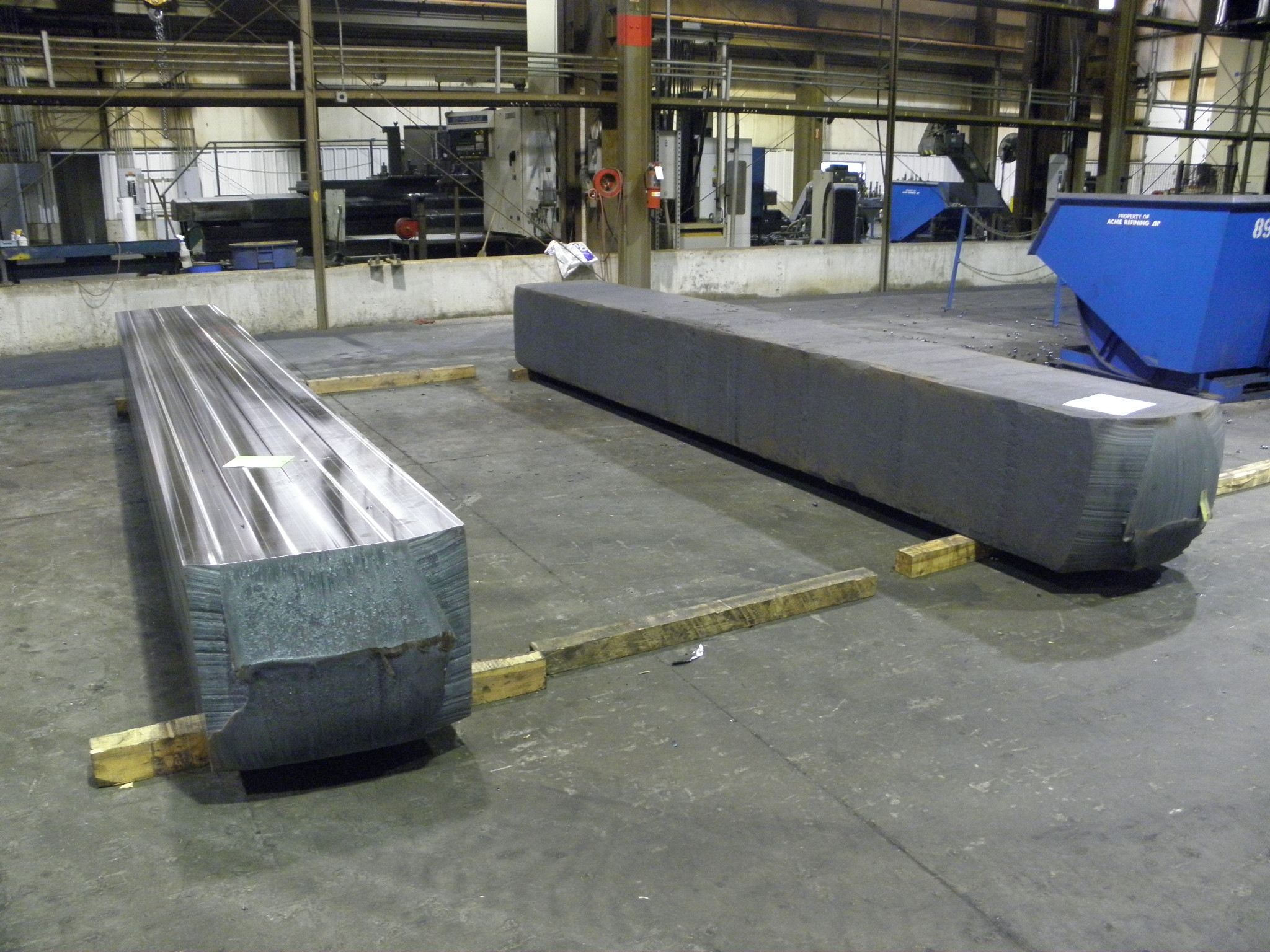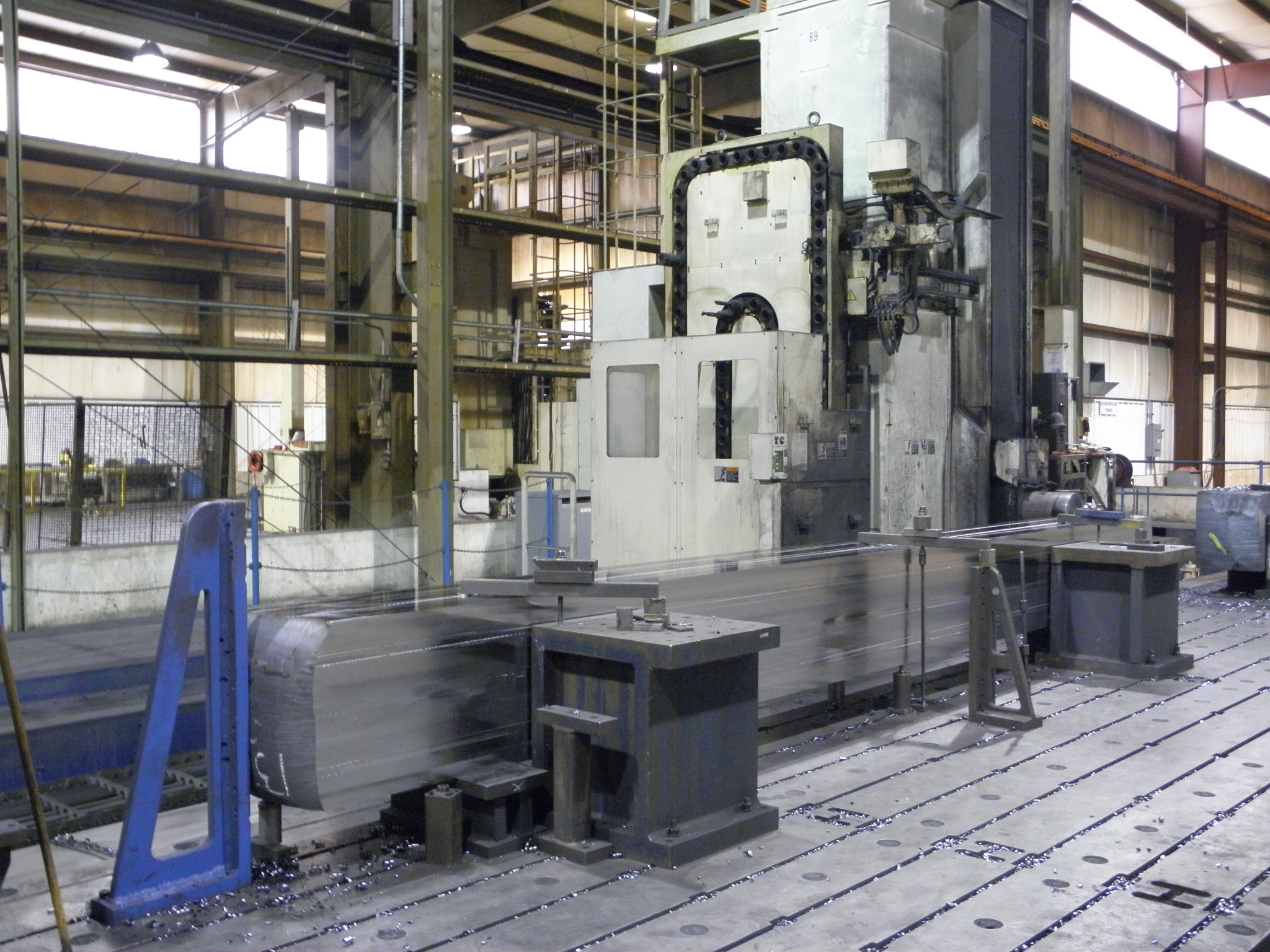Machining of large fabrications and castings is required by many industries. These include the mining, oil and gas, agriculture, construction and machine tool industries. All of these industries are subject to changes in demand. Manufacturing companies that operate in these industries must be able to adjust capacity, up or down, to meet the market demand if they are going to grow when the market is up and if they are going to control costs when the market goes down. The equipment and infrastructure that is required for large machining is expensive and subject to a long lead time to install. This equipment has a long useful life after it is installed. One strategy used by many successful industrial companies is subcontracting of large machining work to meet changes in demand. The current boom in the production of natural gas and oil in the US, the rapid increase in the demand for supporting large machining capacity, and the use of outsourcing by successful companies is a good case study of the application of this strategy.
Horizontal drilling and hydraulic fracturing drilling techniques were developed in Texas after 2000. Since 2004 the production of oil products in the United States has increased 56%. The United States currently produces 12.9 million barrels per day of oil products, leading Saudi Arabia which produces 11.6 million barrels per day. (Source Wall Street Journal 10-15-14). Hydraulic fracturing uses high pressure pumps to force mixtures containing sand into the well. This high pressure and abrasive fluid result in fast wear and short life for the components of the high pressure pump. The high pressure component subject to this short life is the fluid end. The rapidly increasing production of oil and gas in the US and the use of higher pressures and more abrasive fluids have led to rapid growth in the demand for fluid end machining.
Fluid ends are manufactured by many OEMs and supporting companies in the oil and gas industry. The number of companies designing fluid ends and the variety of applications of fluid ends results in many design variations. There are some commonalities in the designs. The majority of fluid ends are made from steel forgings. Fluid ends can require 100 hours of machining time to go from the raw forging state to the finish machined state ready for assembly. The machining operations are divided into stages.
Stage one is the rough machining of the forged blocks. A typical forged block is 270 inches by 25 inches by 20 inches in size and weighing roughly 40,000 pounds. At this stage there is high stock removal and requirements for equal stock removal on each side and a good surface finish. The surface finish is required for subsequent UT (Ultrasonic inspection) of the rough machined block to insure there are no material defects. Picture 1 is an example of a stage one forged block before and after machining. Picture 2 is an example of a large CNC machine during stage one machining.

Picture # 1 – Forged Block Before and After Machining

Picture # 2 – Stage One Machining In Process
Stage two consists of sawing the rough machined block into sections of the proper length for the particular fluid end design.
Stage three consists of the rough machining of the cube into a shape that is near to the final shape required. Large amounts of material are removed at this stage.
Stage four is the semi-finish operation. All but the final very critical operations are completed at this stage.
Stage five is the final machining operation. Contouring of the bores in the fluid end is completed at this stage. Special equipment on the machine tool is required to complete this operation.
The capacity strategy employed by some successful manufacturers of fluid ends is to install capacity for stage five operations that will meet demand when it is at the expected peak. When demand is high the manufacturing will utilize internal capacity for stage five, final machining operations, only. Stage one, two, three, and four operations are outsourced. When demand decreases the manufacturer will bring stage four operations and potentially stage three operations in house to keep the internal capacity utilized. The fluid end manufacturer maintains a high level of equipment utilization. The fluctuation in large machining capacity utilization is pushed out into the companies that specialize in providing outsourced large machining capacity.
Companies that specialize in providing large machining capacity to the fluid end and other manufacturers have unique characteristics. Their equipment must be flexible in order to serve a wide variety of industries and part types. They must have capacity available. Lead time for machining equipment can be 24 months. When a customer needs capacity, they need it within a short lead time. The contract machining specialist must deliver high quality products with a quick startup time to first piece production and short turnaround time from raw material to shipment of final product.
K&M Machine-Fabricating, Inc. located in Cassopolis Michigan is a company that specializes in subcontract large machining services. They have customers in the oil and gas, mining, machine tool, and other industries. K&M has recently dedicated several machines to the stage one rough machining of forged blocks to support the increased demand from fluid end manufacturers.
Use the links below to visit K&M’s website and social media outlets.
October 16, 2014
Visit K&M Machine-Fabricating, Inc. YouTube channel
Follow K&M Machine-Fabricating, Inc. on LinkedIn